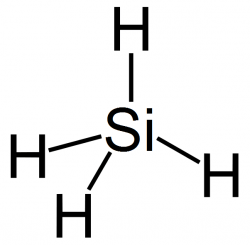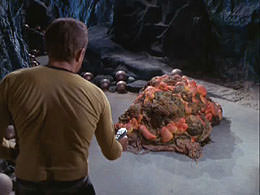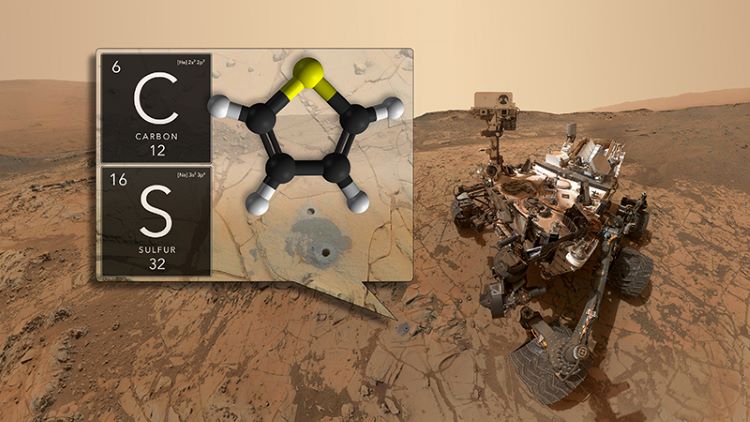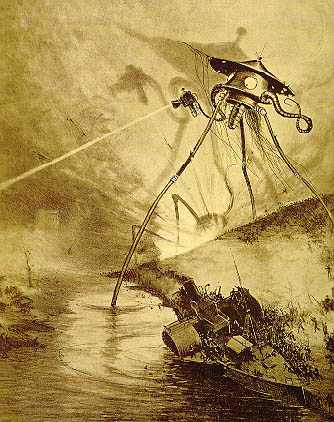Universe Today has recently had the privilege of investigating a myriad of scientific disciplines, including impact craters, planetary surfaces, exoplanets, astrobiology, solar physics, comets, planetary atmospheres, planetary geophysics, cosmochemistry, meteorites, radio astronomy, and extremophiles, and how these multidisciplinary fields can help both scientists and space fans better understand how they relate to potentially finding life beyond Earth, along with other exciting facets. Here, we will examine the incredible field of organic chemistry with Dr. Andro Rios, who is an Assistant Professor in Organic Chemistry at San José State University, regarding why scientists study organic chemistry, the benefits and challenges, finding life beyond Earth, and potential paths for upcoming students. So, why is it so important to study organic chemistry?
Continue reading “Organic Chemistry: Why study it? What can it teach us about finding life beyond Earth?”Book Review: The Caloris Network

Thinking of taking a vacation this summer? Maybe you want to distract yourself with a bit of light science fiction fun. How about a deadly alien life form harbored within our solar system? That’s what Nick Kanas presents in his scientific novel “The Caloris Network.” Being placed not too far into the future, this novel lets the reader enjoy a believable taste of first contact that’s hopefully just as good as the contact from their first summer kiss.

A pleasant novel has an intriguing plot that’s embellished with the interaction of fun characters. Sometimes it will also carry a somber undertone ringing in the background. So unravels the novel “Caloris Network.” The main character, Sam, is an astrobiologist fresh from looking at multicellular life on Europa. At home, her family suffers serious health concerns but she’s continuing with her efforts. Her research takes her to Mercury where something is raising the concern of the spacefaring military. Her fellow crew members involve a possible Martian secessionist, a cranky commander and a love triangle. All this is pretty typical fare.
Next up you may think there’d be the traditional English speaking alien biped threatening the very existence of the human race. But not this time. Instead Kanas identifies the protagonist as a silicate based lifeform on Mercury. No legs for walking and no lips for speaking. Further, this is the proverbial first contact between the human race and a living, thinking organism from another world. Will it be confrontational? As usual. Will it involve death rays? Kind of. Will it force the reader to ponder how to interact for the first time with an alien? Certainly! This is the best part of the book in that it places the reader not so far into the future so as to make the story readily believable. Being barely over a hundred years away, the reader can connect with the technological advances for an expedition on Mercury, for living on Mars and for the poor environmental state of Earth. With the simple lives of the expedition’s crew, the constrained space travel and the understated alien, Kanas has written a novel that would be fun for that long car ride or a day on the beach.
As a bonus, the author includes a chapter at the end of the book that discusses some of the science presented. It has details on what we’ve discovered of Mercury, particularly with regard to what a human visitor might encounter if standing on its surface; the temperature from searing heat to mind numbing cold, a Sun that changes direction in the sky and effects of a molten interior.
For even more fun when you’re at the beach, there’s an inclusion of how to define life. For instance, “Does it need to move?” “What do we mean by reproduction?” “How do we test for the ability to think?” and most entertaining of all, “How do we communicate with it when we can’t even communicate with dolphins yet?” These and other ideas in the novel may keep you up late discussing our very existence while watching the embers of the cottage campfire settle to a deep dark red.
Certainly something on Europa, Titan and Venus awaits people. Maybe it’s alien life. Maybe the life prefers to exist without humans coming to explore. Maybe they will be exactly as what Nick Kanas writes in his scientific novel “The Caloris Network”. With your imagination, take this novel’s plot as believable and see where it takes you. And maybe by reading this on your vacation, you may think that you’ve waited long enough and it’s time to go find out.
This book is available through Springer.
About the author, Dr. Nick Kanas.
Why Silicon-based Aliens Would Rather Eat our Cities than Us: Thoughts on Non-carbon Astrobiology
[/caption]
Editor’s note: Bruce Dorminey, science journalist and author of “Distant Wanderers: The Search for Planets Beyond the Solar System,” interviews NASA astrochemist Max Bernstein for Universe Today about the possibility of Silicon-based life.
Conventional wisdom has long had it that carbon-based life, so common here on earth, must surely be abundant elsewhere; both in our galaxy and the universe as a whole.
This line of reasoning is founded on two major assumptions; the first being that complex carbon chain molecules, the building blocks of life as we know it, have been detected throughout the interstellar medium. Carbon’s abundance appears to stretch across much of cosmic time, since its production is thought to have peaked some 7 billion years ago, when the universe was roughly half its current age.
The other major assumption is that life needs an elixir, a solvent on which it can advance its unique complex chemistry. Water and carbon go hand in hand in making this happen.
While the world as we know it runs on carbon, science fiction’s long flirtation with silicon-based life — “It’s life, but not as we know it” — has become a familiar catchphrase. But life of any sort should evolve, eat, excrete, reproduce, and respond to stimulus.
And although non-carbon based life is a very long shot, we thought we’d broach the issue with one of the country’s top astrochemists — Max Bernstein, the Research Lead of the Science Mission Directorate at NASA headquarters in Washington,D.C.
Bruce Dorminey — IS IT WRONG TO ASSUME THAT LIFE COULD BE BASED ON SOMETHING OTHER THAN CARBON?
Max Bernstein — It’s important for us to keep an open mind about alien life, lest we come across it and miss it. On the other hand, carbon is much better than any other element in forming the main structures of living things. Carbon can form many stable complex structures of great diversity. When carbon forms molecules containing cxygen and nitrogen, the carbon bonds to nitrogen and oxygen are stable. But not so much so that they can’t be fairly easily undone, unlike silicon-oxygen bonds, for example.
Dorminey — DOES THE RECENT NASA-FUNDED RESEARCH AT MONO LAKE, CALIFORNIA WHICH TOUTED THE DISCOVERY OF BACTERIA WITH DNA THAT USES ARSENIC INSTEAD OF PHOSPHORUS RATTLE THE CURRENT PARADIGM?
Bernstein — That was a really cool result, but the basic structure was still carbon. The arsenic was said to have replaced phosphorus, not carbon. The discovery of this putative arsenic organism may prove to be incorrect, but it’s a hypothesis with science behind it, and not just someone tossing out an idea and leaving it at the level of what if you replaced carbon with silicon?

Dorminey — SILICON SEEMS TO BE THE MOST POPULAR NON-CARBON BASED CANDIDATE, ARE THERE OTHERS THAT ALSO MIGHT BE FEASIBLE?
Bernstein — It’s hard to imagine anything that would be more likely that silicon because there is nothing closer to carbon than silicon in terms of its chemistry. It’s in the right place on the periodic table, just below carbon. On the face of it, [silicon-based life] doesn’t seem too absurd since silicon, like carbon, forms four bonds. CH4 is methane and SiH4 is silane. They are analogous molecules so the basic idea is that perhaps silicon could form an entire parallel chemistry, and even life. But there are tons of problems with this idea. We don’t see a complex stable chemistry [solely] of silicon and hydrogen, as we see with carbon and hydrogen. We use hydrocarbon chains in our lipids (molecules that make up membranes), but the analogous silane chains would not be stable. Whereas carbon-oxygen bonds can be made and unmade — this goes on in our bodies all the time — this is not true for silicon. This would severely limit silicon’s life-like chemistry. Maybe you could have something silicon-based that’s sort of alive, but only in the sense that it passes on information.
Dorminey — IF SILICON-BASED LIFE IS OUT THERE, HOW COULD WE EVER DETECT IT REMOTELY?
Bernstein — We are seriously arguing about how we would remotely detect life just like us, so I really couldn’t say. Presumably technology-using organisms, whatever their biochemistry, will produce technology, so the Search for Extraterrestrial Intelligence (SETI) may be our best shot.
Dorminey— HOW WOULD YOU LOOK FOR SILICON-BASED LIFE HERE ON EARTH?
Bernstein — When seeking an alien organism its really tough because you just don’t know what molecules to look for. One would have to be satisfied by something a bit more ambiguous, like sets of molecules that should not be there. For example, if you were an alien Silicon organism, you might not be looking for our biochemistry, but the fact that you kept seeing exactly the same chain lengths over and over again might tip you off to the fact that those darn carbon chains might actually be the basis of an organism’s membranes.

Dorminey — WHERE ARE THE LARGEST CONCENTRATIONS OF SILICON HERE?
IN SAND?
Bernstein — In sand or rock. There are literally megatons of silicate minerals on Earth.
Dorminey — HAS ANYONE EVER CLAIMED DETECTION OF SELF-REPLICATING EXAMPLES OF SILICON HERE ON EARTH?
Bernstein — There have been ideas about minerals holding information just as DNA holds information. DNA holds information in a chain that is read from one end to the other. In contrast, a mineral could hold information in two dimensions [on its surface]. A crystal grows when new atoms arrive on the surface, building layer upon layer. So, if a crystal sheet cleaved off and then started to grow that would be like the birth of a new organism and would carry information from generation to generation. But is a replicating crystal alive? To date, I don’t think that there is actually any evidence that minerals pass information like this.
Dorminey — IS THE CRUX OF THE PROBLEM THAT SILICON-BASED LIFE WOULD BE SO SLOWLY REPLICATING THAT IT COULD NEVER MAKE IT IN A DYNAMIC UNIVERSE?
Bernstein — I don’t think that any Silicon life form could be a biological threat to us. If they were high tech, they might eat our buildings or shoot guns at us but I don’t see how they could infect us. We run hot and move fast. If we don’t, things will catch us and eat us.
If they are also tougher than we are and whatever feeds on them is also slow and Silicon based maybe being slow doesn’t matter.
Dorminey — WHAT WOULD BE THE SIGNATURES OF SILICON-BASED LIFE?
Bernstein — If they are not technological, they would be very tough to detect. We could look for unstable, unexpected silicon molecules; some high energy molecule that should not be there, or molecular chains of all the same length.
Dorminey — DO YOU THINK THAT SILICON-BASED LIFE MIGHT EXIST SOMEWHERE OUT THERE?
Bernstein — Maybe deep below the surface of a planet in some very hot hydrogen-rich, Oxygen-poor environment, you would have this complex silane chemistry. There, maybe silanes would form reversible silicon bonds with selenium or tellurium.
Dorminey — IF SUCH SILICON-BASED LIFE DID CROP UP, WHAT WOULD BE ITS EVOLUTIONARY ENDGAME?
Bernstein — If it could evolve past the protist [microorganism] stage, then I think it could evolve intelligence. I have no idea how likely it is for intelligence to evolve, but I can believe in silicon crystals passing information from layer to layer or in silicon artificial intelligence, but I don’t expect to see silicon apes playing their equivalent of “Angry Birds” on their Silicon-Phones.
Dorminey — IF SILICON-LIFE DID EVOLVE, WOULD ITS LIFESPAN BE MUCH LONGER THAN ITS CARBON-BASED ANALOGUES?
Bernstein — The replicating mineral that I described earlier would be living very, very slowly on Earth’s surface. But maybe somewhere very much hotter, its lifespan would be shorter. That’s because presumably lifespan is connected to the pace of your chemistry, which depends on temperature.
Dorminey — FINALLY, WHAT WOULD ENDANGER NON-CARBON-BASED LIFE?
Bernstein — Physical harm for sure. Presumably you could take a jackhammer to it?
But our biochemistry would not be pathogens to it; we could not “infect” them as was the case in “War of the Worlds.”



